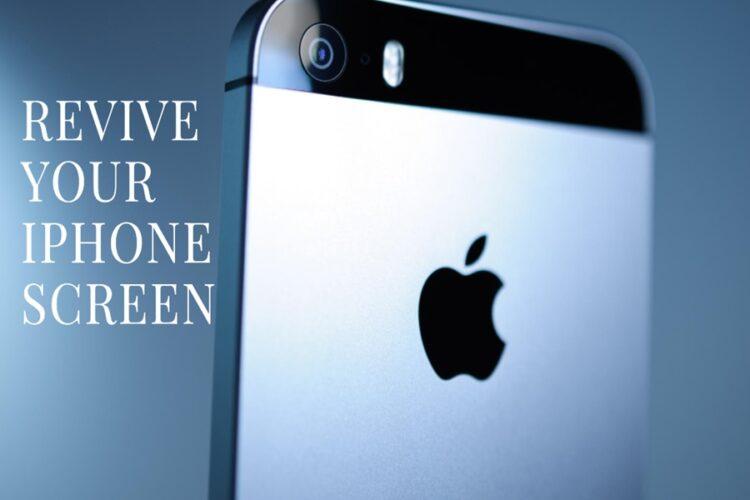Introduction:
In the age of technology, our smartphones have become an extension of ourselves. The iPhone, in particular, has established its dominance in the market due to its seamless integration, user-friendly interface, and top-tier performance. But what happens when the screen goes black, rendering it inoperable? Fear not! This guide serves as a valuable resource, detailing how to fix a black screen on your iPhone. Whether you’re tech-savvy or new to iPhone troubleshooting, this guide is tailored to provide you with step-by-step solutions.
Explaining the Black Screen Issue on iPhone:
Imagine setting your alarm to wake up for an important meeting, only to find your iPhone’s screen is pitch black the next morning. Though the buttons might respond, there’s no visual feedback. It’s akin to having a TV with sound but no picture. This guide offers solutions to address and fix such issues, restoring your iPhone to its former glory.
The Significance of Fixing a Black Screen on iPhone:
Beyond the obvious inconvenience, a non-responsive screen can mean missed notifications, inability to make emergency calls, or access important data. Addressing this promptly can save time, avoid potential data loss, and ensure your device remains reliable.
Preliminary Steps
1.1. Determine the Cause: Before diving into fixes, understanding the root cause is crucial.
- Check for physical damage: A fallen iPhone might result in internal damages not immediately visible.
- Identify if exposed to water or extreme temperatures: iPhones have indicators that turn red upon contact with water.
- Recall recent software updates or app installations: Some software glitches or incompatible apps can cause screen issues.
1.2. Ensure the Phone is Charged: A dead battery could be the culprit.
- Plug into an official Apple charger: Off-brand chargers might not deliver adequate power.
- Leave the phone to charge: A completely drained battery needs time.
1.3. Check Screen Brightness: Occasionally, the brightness setting might be unintentionally reduced.
- Ensure screen isn’t dimmed: Try increasing brightness using Control Center, or ask Siri to “increase brightness.”
Basic Troubleshooting Techniques
2.1. Force Restart the iPhone: A universal solution for many tech woes.
- For iPhone 8 and newer: Quick press Volume Up, then Volume Down, followed by holding the Side button.
- iPhone 7 and 7 Plus: Hold both Volume Down and Sleep/Wake buttons.
- iPhone 6s and older: Press Home and Sleep/Wake simultaneously.
2.2. Examine the Display:
- Check for visible damage: Cracks or discoloration may indicate damage.
- Ensure no obstructions: Clean any debris that might be covering sensors.
Advanced Troubleshooting Steps
3.1. Connect to iTunes (or Finder on macOS Catalina and newer):
- Use a trusted connection: An authentic Apple cable is recommended.
- Enter recovery mode: This allows iTunes or Finder to recognize the device.
- Follow instructions: You may need to restore or update your iPhone.
3.2. Check for Hardware Issues:
- Test another screen: If you’ve a spare, test to rule out display issues.
- Device response: Ensure the device vibrates or makes sound, indicating it’s operational.
Seeking Professional Help
4.1. Schedule with Apple Support:
- Official Apple support website: Apple technicians are trained to handle such issues.
- Choose convenience: Pick a suitable time and location.
4.2. Third-party Repair Services:
- Reputation matters: Always opt for trustworthy technicians.
- Customer feedback: Reviews give insight into service quality.
Post-Repair Considerations
5.1. Backup Your Data Regularly:
- Use iCloud or iTunes: Apple’s solutions are seamless.
- Third-party backups: Ensure security and reliability.
5.2. Monitor Performance:
- Watch for recurring issues: Address anomalies promptly.
- Software updates: They often contain fixes for known glitches.
Preventive Measures
6.1. Protective Gear:
- Screen protector: Minimize screen scratches or cracks.
- Protective case: Shield against potential drops.
6.2. Avoid Extreme Environments:
- Sunlight: Can overheat and damage internal components.
- Water and humidity: Even water-resistant models have their limits.
Conclusion:
Armed with this guide, you’re now equipped to tackle the dreaded black screen on your iPhone. Regular maintenance and preventive measures can further ensure a longer device lifespan. Dive deeper into our blog for more insights on iPhone care and optimization.
Personal Closing Remarks:
Thank you for dedicating your time to read through our guide. We’re committed to delivering valuable content that addresses your tech needs. Stay connected for more insights!
FAQs:
Is a black screen indicative of a dead iPhone?
Not necessarily. It could be a software glitch, battery issue, or other fixable problems.
How long should I charge my iPhone before trying other solutions?
At least 30 minutes with an official Apple charger.
Does force restarting erase data?
No, it’s a safe process that doesn’t delete any data.
When should I consider a third-party repair?
If the issue persists after trying all solutions or if out of warranty, consider reputable third-party repairs.

